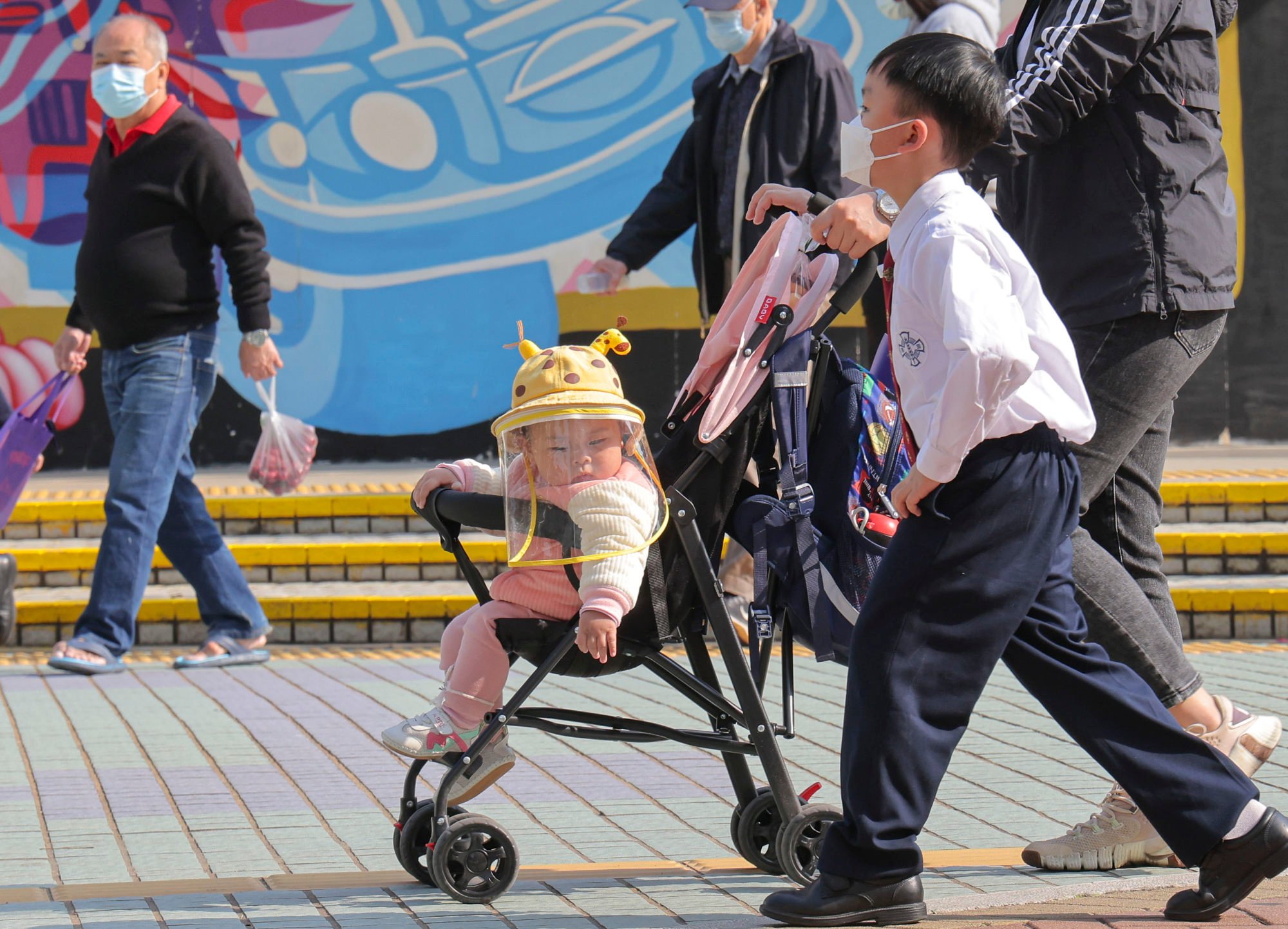
US$2,500 cash handout to new parents in Hong Kong will not truly foster a baby boom – it’s like a guilty mum or dad spoiling a child
- The government needs to adopt a more comprehensive approach that goes far beyond cash handouts if Hong Kong is going to reverse its plummeting birth rate
- The traditional Chinese family structure serves as a good model for establishing affordable childcare options that can effectively support working parents
Who wouldn’t want an extra HK$20,000 (US$2,555) in their pocket? However, when it comes to a recent offer made by the Hong Kong government, there is an umbilical cord attached.
Hong Kong aims to increase the number of babies born annually over the next three years through various measures, including a one-time cash handout and expedited access to public housing for families with new children.
The current situation is concerning; the average number of children per woman fell from 1.3 in 2017 to just 0.9 in 2022, with about 32,000 births in a year. This is not a promising scenario for a city that aims to attract individuals from overseas to settle down and build families.

People are naturally drawn to a city that is prosperous, vibrant, happy and healthy both for residents and in terms of the environment. While economic factors are significant in determining prosperity, other indicators such as birth rates and suicide rates can help measure overall quality of life.
A high birth rate indicates a favourable environment for raising children, while a low suicide rate can be seen as a positive indicator of the population’s mental health and well-being. It suggests that the city provides accessible education, healthcare, stable employment and a safe environment – all of which are attractive factors.
Offering financial incentives to encourage couples to have children is not a new concept. This bold solution to declining birth rates and an ageing population has been used by governments worldwide.
Forget new night markets, ‘Night Vibes Hong Kong’ should revitalise old ones
But does it hold the key to revitalising Hong Kong?
Picture a future where bustling nurseries are filled with the joyful cries of newborns. A higher birth rate promises a vibrant and dynamic population that will inject new life into our society and economy.
More individuals means more consumers, igniting demand and fuelling economic growth. Moreover, a larger workforce can produce and innovate more to propel our city to new heights.
Beyond the economic advantages, encouraging higher birth rates ensures a secure foundation for the well-being of future generations.
At times, the Hong Kong government appears too doting, resembling a highly successful parent who experiences guilt
By increasing the population, we can confront head-on the challenges posed by an ageing society. A robust population guarantees the necessary support systems for our elderly, offering care and companionship. It also safeguards our cultural heritage, preserves diversity and ensures continuity.
However, let us not be blind to the complexities of this issue. Financial incentives are not a panacea. To truly foster a baby boom, the government must adopt a comprehensive and multifaceted approach.
Long-term support programmes that extend far beyond a one-time payout are essential. Accessible and affordable childcare and high-quality education are vital components of a nurturing environment for growing families.
The success of this ambitious endeavour also hinges on addressing broader challenges. Socioeconomic factors, personal choice and global circumstances all influence the decision to have children.

Moreover, a delicate balance must be struck to prevent overpopulation and a strain on vital resources. Investments in healthcare, education and infrastructure must be carefully planned and executed to accommodate the needs of an expanding population sustainably.
At times, the Hong Kong government appears too doting, resembling a highly successful parent who experiences guilt. Such guilt arises when parents feel conflicted about their responsibilities, question their parenting methods and feel inadequate because of their perceived shortcomings.
To compensate, these parents often indulge their children, using rewards as a means to demonstrate love and commitment.
However, it is important for the government, in the role of “parent”, to recognise that money alone cannot solve all problems.

The traditional Chinese family structure serves as a good model. After a child is born, grandmothers from both sides often provide primary childcare. It is common to see grandmothers playing an active role in raising the next generation.
This arrangement serves as an affordable and reliable childcare service that supports working parents and enables them to balance their family and career responsibilities.
Additional financial help, such as child allowances, tax credits and education subsidies, can help alleviate the financial burden of raising children. However, it is crucial to establish affordable childcare options, within a well-designed infrastructure that can effectively support working parents, to act as surrogate “grandmothers” to help raise happy and healthy children.
Why Hong Kong needs a culture tsar – not just a ‘mega’ events committee
At the same time, it is worth considering arguments in favour of promoting a smaller population while prioritising the well-being and quality of children.
A smaller population can help alleviate the strain on natural resources and reduce the city’s carbon footprint. With fewer children to care for, the government can allocate more resources per child, leading to improved outcomes in terms of physical and mental health, as well as education.
Furthermore, having a high-quality population entails individuals with diverse skills, talents, education and expertise. A city with a well-educated and skilled populace can reap numerous benefits, including innovation, economic growth, a vibrant cultural scene, a thriving workforce and low unemployment. It can attract business, foster entrepreneurship and deliver a superior overall quality of life for all.

In determining the ideal population of a city, both quality and quantity play pivotal roles.
Hong Kong’s success and quality of life depend on finding the perfect recipe for population management. Balancing the number of residents and the welfare of children while accommodating individual choice is key to creating a vibrant and prosperous city.
Determining the ideal population size is like crafting a gourmet dish. It requires careful consideration of various ingredients, such as infrastructure capacity, resource availability, environmental sustainability and social harmony.
To achieve this, extensive research, consultations with experts and engaging the community are essential.
Why John Lee’s baby bonus is fool’s gold for Hong Kong
But it doesn’t stop there. To truly elevate Hong Kong’s flavour, we must create an environment that nurtures and supports its residents. Investing in education, healthcare, affordable housing and sustainable infrastructure adds the perfect seasoning to the mix.
In a nutshell, achieving the ideal population size for Hong Kong is like achieving culinary perfection. By finding the right balance between residents’ well-being, available resources and sustainability, we create a city that is not only thriving but also tantalisingly delightful.
Bon appétit!
Luisa Tam is a Post editor who also hosts video tutorials on Cantonese language that are now part of Cathay Pacific’s in-flight entertainment programme

